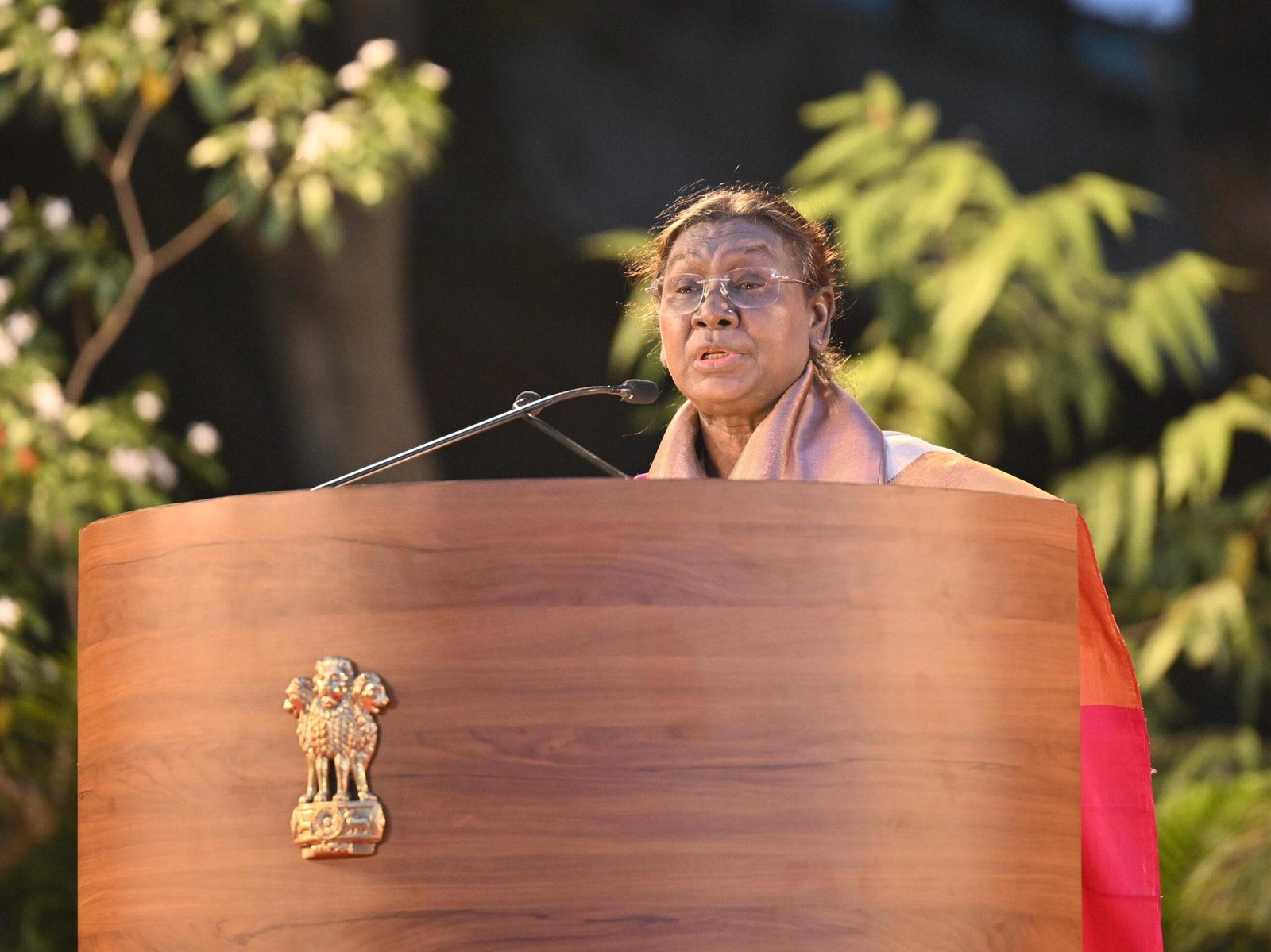President Droupadi Murmu graced the 44th convocation ceremony of the National Institute of Design (NID)
convocation_ceremony_nid

President Droupadi Murmu Graces National Institute of Design Convocation Ceremony – A Landmark Event in Design Education
Introduction
On February 27, 2025, President Droupadi Murmu graced the 44th Convocation Ceremony of the National Institute of Design (NID) in Ahmedabad, Gujarat. The event marked an important milestone for the institute, celebrating the achievements of its graduating students and reinforcing the role of design in nation-building and social change
convocation_ceremony_nidPresident Murmu, in her inspiring speech, emphasized the power of design to address societal challenges, promote innovation, and uplift marginalized communities. Her presence at the event was a testament to the growing significance of design education in India.
President Droupadi Murmu’s Speech: The Power of Design for Societal Progress
In her keynote address, President Murmu underscored the critical role of design in solving real-world problems. She highlighted that design is not just about aesthetics but also about functionality, innovation, and impact.
Key Highlights from President Murmu’s Speech:
1. Design as a Solution to Societal Challenges
President Murmu emphasized that many of the world’s pressing problems can be solved through innovative design thinking rather than excessive resource consumption. She encouraged students to focus on creating solutions that improve the quality of life for underprivileged communities.
“Creative thinking can lead to solutions that improve the ease of living, especially for marginalized communities,” she stated.
2. Revitalizing Traditional Indian Design Knowledge
The President stressed the importance of integrating India’s rich cultural heritage and traditional design practices into modern innovation. She highlighted how traditional crafts, architecture, and textiles hold valuable lessons in sustainability, efficiency, and aesthetics.
“Revitalizing the historical solutions drawn from India’s diverse cultures and leveraging them for innovation will not only benefit the nation but also contribute to global progress.”
She urged designers to explore traditional Indian crafts, local materials, and sustainable design techniques to create a harmonious balance between the past and the future.
| ♦ लेटेस्ट जानकारी के लिए हम से जुड़े ♦ |
| WhatsApp पर हमसे बात करें |
| WhatsApp पर जुड़े |
| TeleGram चैनल से जुड़े ➤ |
| Google News पर जुड़े |
3. The Role of Design in Bridging Urban-Rural Divides
President Murmu lauded NID’s commitment to socially responsible design and its impact on sectors like healthcare, housing, sanitation, and rural development. She pointed out that design interventions can be instrumental in reducing inequalities between urban and rural areas.
“Our designers have demonstrated the power of design to create positive social change,” she said.
She encouraged young designers to step beyond corporate-driven projects and explore opportunities that directly benefit rural and underserved communities.
4. A Message to Graduating Students – Prioritize Functionality Alongside Aesthetics
Speaking directly to the graduating students, President Murmu emphasized that good design is not just about appearance but also about functionality, sustainability, and usability. She urged them to engage with real-world problems, collaborate with different sectors, and apply their creative skills to benefit society.
She also encouraged designers to draw inspiration from Mahatma Gandhi, who saw design as a tool for self-sufficiency and social empowerment.
“Gandhiji’s sole motive was to free millions of people from poverty. His notion of design had a beauty of its own,” she said, referring to his belief in simple yet impactful design solutions like the spinning wheel (charkha).
The National Institute of Design (NID) – A Legacy of Excellence
The National Institute of Design (NID), established in 1961, has been at the forefront of design education in India. Over the decades, NID has nurtured some of the country’s finest designers who have contributed to fields such as industrial design, communication design, product design, textile design, and more.
NID’s Commitment to Socially Responsible Design
One of the most distinctive features of NID is its emphasis on design for social impact. The institute has played a crucial role in developing user-centric solutions that address everyday challenges. Its graduates have worked on projects in healthcare, agriculture, disaster relief, and sustainable architecture, proving that design can be a catalyst for positive transformation.
Innovation and Entrepreneurship at NID
NID has also become a hub for innovation and entrepreneurship. Many of its alumni have gone on to establish successful design firms, startups, and consultancy businesses, contributing to India’s booming creative economy. The design industry in India is rapidly expanding, with increasing demand for UX/UI design, product design, branding, and digital experiences.
The Future of Design in India – President Murmu’s Vision
President Murmu’s visit to NID underscored the government’s commitment to promoting design education and innovation. She acknowledged the role of design in India’s economic and technological growth and called for more investments in research, skill development, and interdisciplinary collaboration.
Encouraging Design in Government Policies
She also pointed out that design should be integrated into public policies, urban planning, and infrastructure development to create smarter, more inclusive cities. With the rise of digital technology, AI, and automation, she emphasized the need for human-centered design thinking in all sectors.
“A strong design culture will help India become a global leader in innovation and sustainable development,” she concluded.
Conclusion – A Defining Moment for Indian Design Education
The 44th convocation ceremony of NID was more than just an academic milestone; it was a celebration of India’s design potential. President Droupadi Murmu’s presence and inspiring speech reinforced the transformative power of design in shaping the future of the country.
Her call for socially responsible, sustainable, and inclusive design serves as an inspiration for emerging designers to think beyond aesthetics and contribute to meaningful change.
Key Takeaways from the Event:
✔ Design is a powerful tool for social transformation.
✔ Traditional Indian design knowledge should be integrated into modern innovation.
✔ Functionality and sustainability must be prioritized in design solutions.
✔ Design can bridge the gap between urban and rural India.
✔ India’s future in design lies in innovation, entrepreneurship, and interdisciplinary collaboration.
Watch the Event:
For a visual recap of President Murmu’s address at NID’s 44th Convocation Ceremony, watch the official coverage here:
➡ President Murmu at NID’s Convocation 2025












